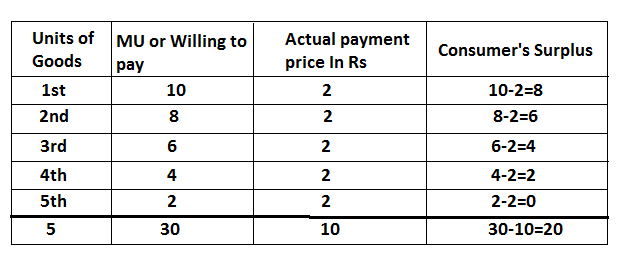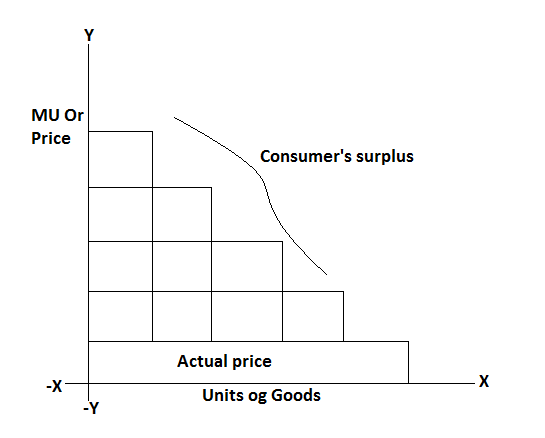Published by: sadikshya
Published date: 28 Jun 2021

The concepts of consumer’s surplus were originally introduced by Dupit and latter developed and popularized by Marshall. It is consumers feel that his utility from the purchase of commodity is greater than the sacrifice he made for the purchase of the commodity, and then there is a consumer’s profit. Consumer surplus is the difference between utility derived from a commodity add sacrifice made to obtain the commodity in monetary terms. Consumer surplus is the difference between what a consumer would be willing to pay for a commodity and what he actually pays for the commodity in short.
Consumers surplus=wiliness to pay-actual payment
According to Marshall “the access of the price which he would be willing to pay rather than go without the things, over that which he actually does to pay is the economic measure of this surplus satisfaction. It may be called the consumers surplus”.
This law is best on the following assumptions.
Under the above various assumptions, the law of consumer’s surplus can be explained by the following table:

The above table shows that the consumers buy 5 units of goods, total payments for 5 units of goods Rs 10, consumer’s surplus from 5 units of goods Rs 20 (30-10). It can be explained by the following figure.

In this figure, shaded areas show the consumers surplus and the non-shaded area shows the actual price. Consumer surplus is the difference between potential price and actual price.